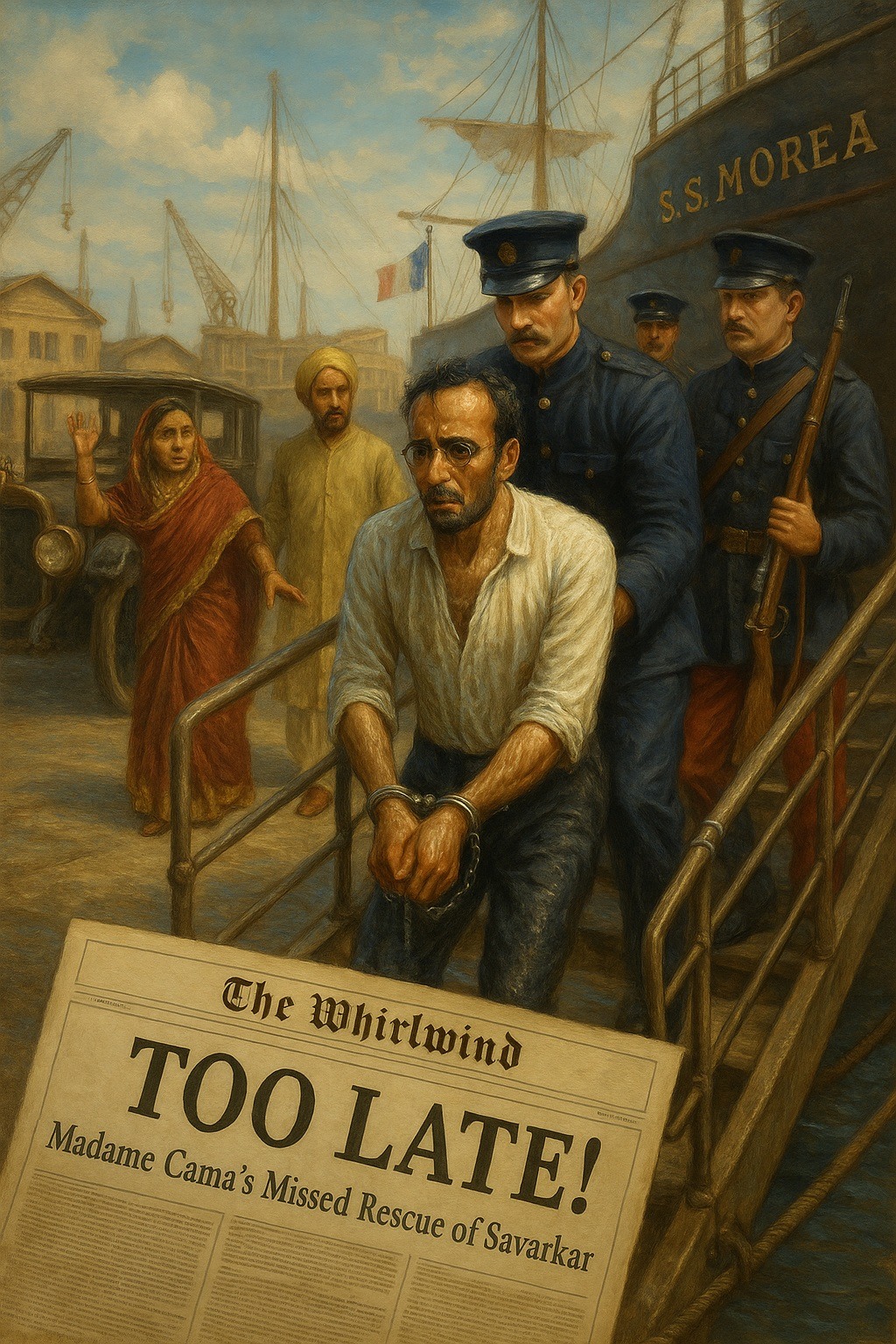Tag: France
-
The dramatic escape of Vinayak Damodar (Veer) Savarkar at the port of Marseilles in July 1910 remains one of the most notable episodes of India’s revolutionary struggle. Under strict British custody, Savarkar attempted a daring flight through the porthole of the docked S.S. Morea, swimming through the harbor waters to set foot on French soil.…
-
On the morning of July 8, 1910, Vinayak Damodar (Veer) Savarkar managed to escape from his British guards aboard the steamer S.S. Morea, anchored in the French harbor of Marseille. After a brief swim from the docked ship to the quay, he set foot on French soil. Savarkar’s Plan Behind the Escape By reaching the…
-
On 1 July 1910, Vinayak Damodar Savarkar was removed from Brixton Prison under the heaviest of guards. His fate had been sealed: the British authorities had resolved to send him back to India to face trial in connection with revolutionary activities and the Nasik Conspiracy Case. For this purpose, he was placed aboard the French…
-
Political Dimension of Hindutva, Part 6 The Concept of “Responsive Resistance” Vinayak Damodar Savarkar was deeply influenced by the idea of “Responsive Resistance,” a term coined by Bal Gangadhar Tilak. This concept proposed that Indian cooperation with British colonial rule should be directly proportional to the level of political reforms granted by the British. More…




